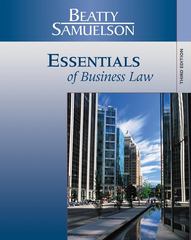
Please work on the following questions;
The questions are complete
12. (5 points) (a) (0.5 points) State two ways a deductible can reduce the claims paid by insurers. The deductible level chosen by an insured can affect an insurer's claim severity. You are given the following two claims before the application of any deductible: Claim Number Claim Amount 1 200 2 1,000 (b) (0.5 points) Determine a deductible amount that will decrease the insurer's claim severity. (c) (0.5 points) Determine a deductible amount that will increase the insurer's claim severity. You are given the following claim information for a property line of business: Claim Range Counts in Interval Claims 0 - 1.000 600 300.000 1,001 - 2000 280 400,000 2,001 - 4,000 100 300,000 >4.000 20 500,000 Total 1,000 1,500,000 The base deductible is 1,000. (d) (2 points) Calculate the indicated deductible factors for deductibles of 2,000 and 4.000 relative to the base deductible. (e) (1.5 points) Recommend a factor for a deductible of 3,000. Justify your recommendation.13. (4 points) Roburns Insurance Company provides claims-made professional liability insurance to ABC Services. You have the following information: . Report year 2020 expected ultimate claims are 60,000 with: o 50% from accident year lag 0, o 30% from accident year lag 1, and o 20% from accident year lag 2. The annual claim trend is 10%. The fixed expenses for report year 2020 are expected to be 5,000. The annual trend in fixed expenses is 2%. Variable expenses are 18% of premium. The profit margin is 4% of premium. (a) (0.5 points) Calculate the premium for a report year 2020 mature claims-made policy effective January 1, 2020. (b) (2 points) Calculate the tail factor following the mature claims-made coverage from part (a). ABC Services decides to switch to an occurrence policy for the renewal on January 1, 2021. (c) (/ point) Calculate the premium for the 2021 occurrence policy. (d) (0.5 points) Explain whether or not ABC Services would need a tail policy.14. (5 points) You are estimating IBNR using the development method, and are given the following information: Accident Incremental Paid Claims Year 12 24 36 48 2016 4,056 3,844 1.040 500 2017 4,500 3,300 1.000 2018 3,150 2,900 2019 3,900 Accident Case Estimates Year 12 24 36 2016 3,167 2,100 1.800 1,400 2017 4,000 2,000 1,900 2018 3,650 2.650 2019 3,400 . A legislative change became effective January 1, 2018, reducing claim costs 10% for all claims paid on or after this date. . The reported claims tail factor for 48 months to ultimate is 1.03. (a) (2.5 points) Calculate reported claim development factors using a volume- weighted average. (b) (0.5 points) Calculate the accident year 2019 IBNR reserve as of December 31, 2019 using the results from part (a). The reported tail factor provided above was based on industry experience for a similar coverage. (9) (0.5 points) Identify two other approaches that could be used to determine a tail factor for this coverage. (d) (1.5 points) Critique each approach identified in part (c)










